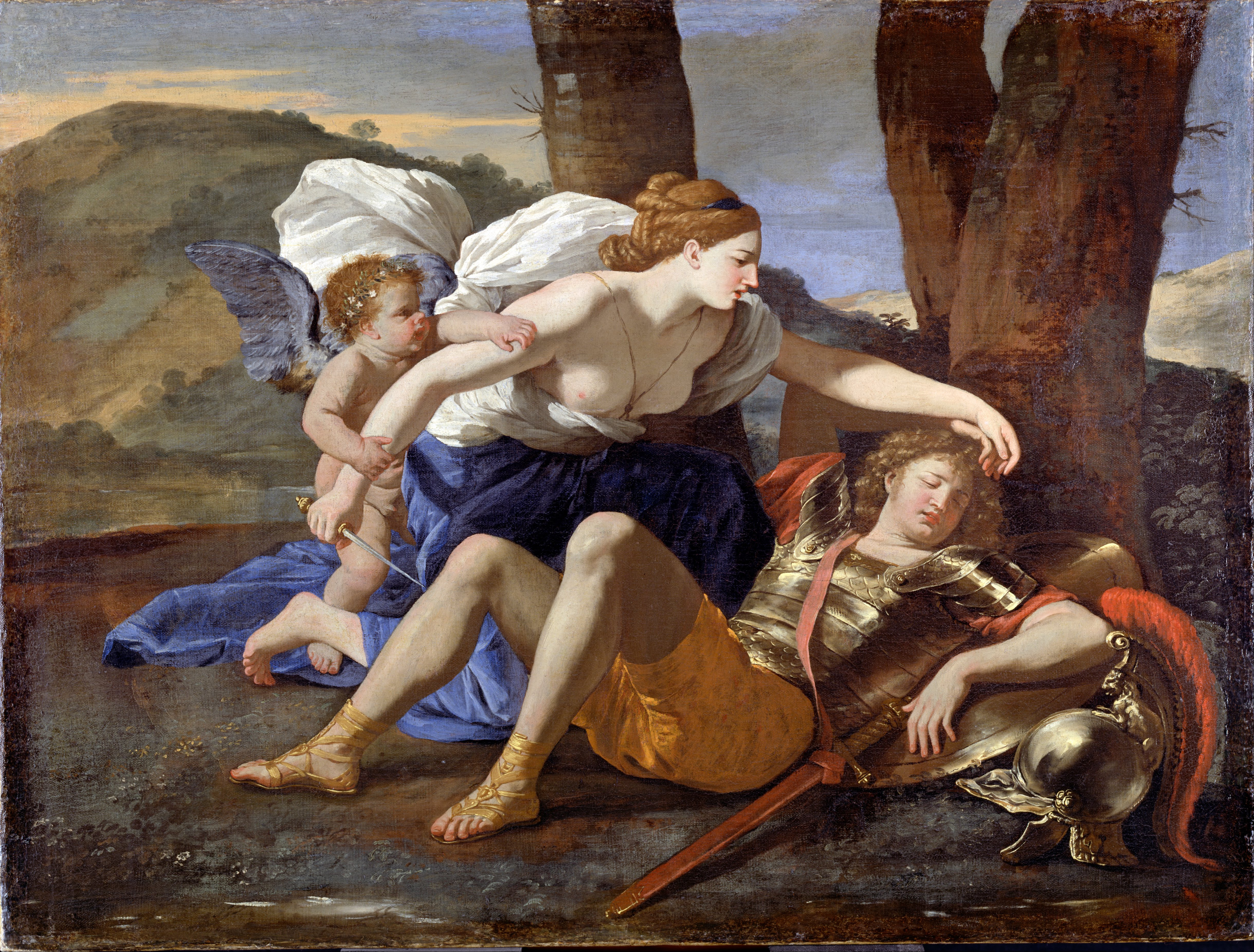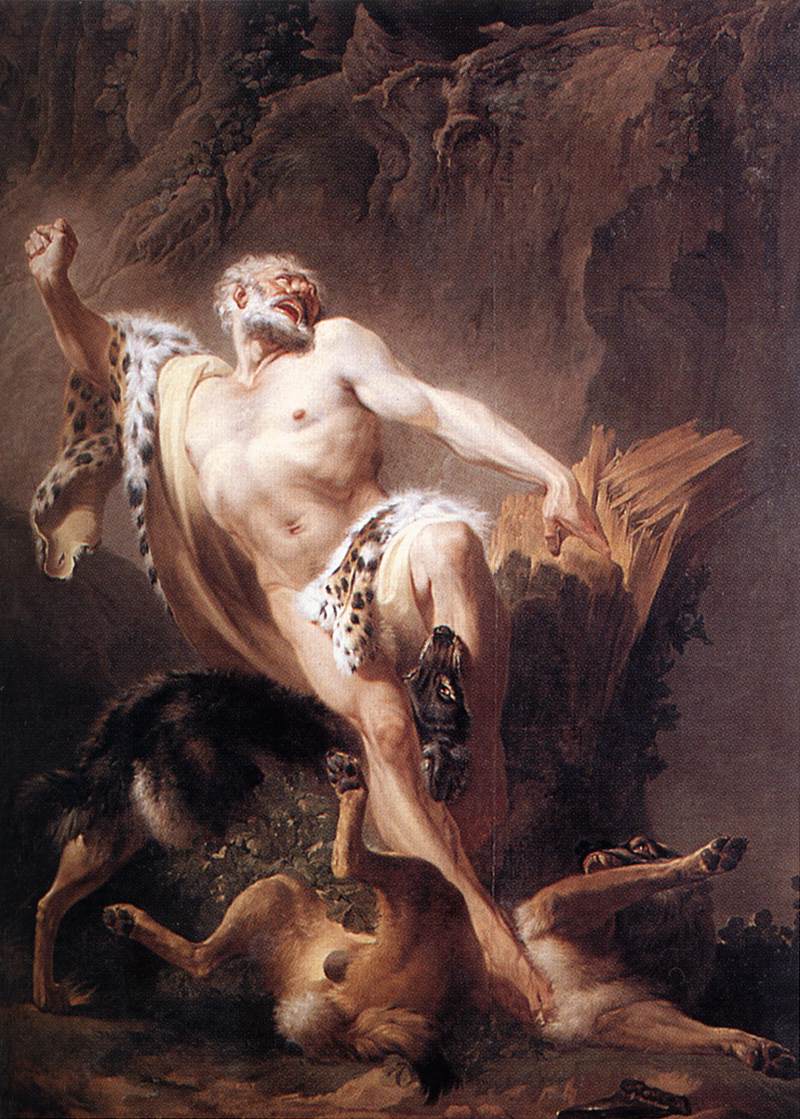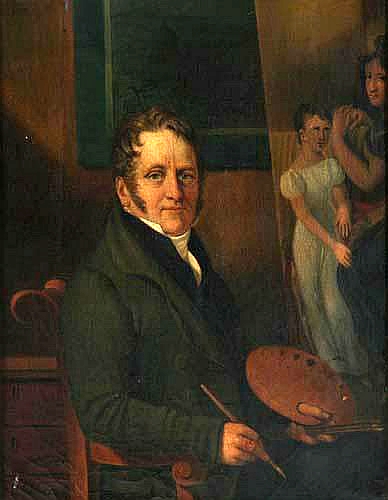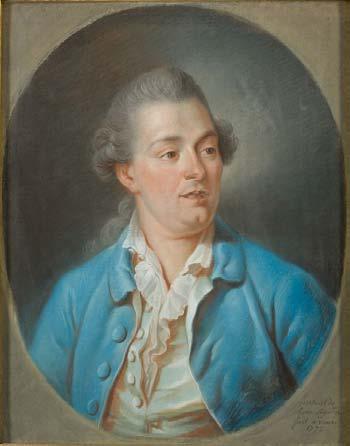|
Joseph-Benoît Suvée
Joseph-Benoît Suvée (3 January 1743 – 9 February 1807) was a Flemish painter strongly influenced by French neo-classicism. Biography Suvée was born in Bruges. Initially a pupil of Matthias de Visch, he came to France aged 19 and became a pupil of Jean-Jacques Bachelier. In 1771, he won the Prix de Rome. In Rome from 1772 to 1778, he prolonged the usual duration allowed to pensionaries of the French Academy in Rome. He was named an academician on his return to Paris and he opened an art school for young women at the Louvre. One of his students was Constance Mayer. He emulated and competed with Jacques-Louis David, earning his enduring hatred. Named the French Academy in Rome's director in 1792, replacing François-Guillaume Ménageot, he was imprisoned for a while in the Prison Saint-Lazare and only able to take up the post in 1801. After a brilliant career, and a six years' stay in Rome as the Academy's Director, he died there suddenly. His works include ''Ach ... [...More Info...] [...Related Items...] OR: [Wikipedia] [Google] [Baidu] |
Bruges
Bruges ( , nl, Brugge ) is the capital and largest city of the province of West Flanders in the Flemish Region of Belgium, in the northwest of the country, and the sixth-largest city of the country by population. The area of the whole city amounts to more than 13,840 hectares (138.4 km2; 53.44 sq miles), including 1,075 hectares off the coast, at Zeebrugge (from , meaning 'Bruges by the Sea'). The historic city centre is a prominent World Heritage Site of UNESCO. It is oval in shape and about 430 hectares in size. The city's total population is 117,073 (1 January 2008),Statistics Belgium; ''Population de droit par commune au 1 janvier 2008'' (excel-file) Population of all municipalities in Belgium, as of 1 January 2008. Retrieved on 19 October 2008. [...More Info...] [...Related Items...] OR: [Wikipedia] [Google] [Baidu] |
Erminia
''Jerusalem Delivered'', also known as ''The Liberation of Jerusalem'' ( it, La Gerusalemme liberata ; ), is an epic poem by the Italian literature, Italian poet Torquato Tasso, first published in 1581, that tells a largely mythified version of the First Crusade in which Christian knights, led by Godfrey of Bouillon, battle Muslims in order to siege of Jerusalem (1099), take Jerusalem. Tasso began work on the poem in the mid-1560s. Originally, it bore the title ''Il Goffredo''. It was completed in April, 1575 and that summer the poet read his work to Alfonso II, Duke of Ferrara, Duke Alfonso of Ferrara and Lucrezia, Duchess of Urbino. A pirate edition of 14 cantos from the poem appeared in Venice in 1580. The first complete editions of ''Gerusalemme liberata'' were published in Parma and Ferrara in 1581. Tasso's choice of subject matter, an actual historic conflict between Christians and Muslims (albeit with fantastical elements added), had a historical grounding and created comp ... [...More Info...] [...Related Items...] OR: [Wikipedia] [Google] [Baidu] |
Gracchi
The Gracchi brothers were two Roman brothers, sons of Tiberius Sempronius Gracchus who was consul in 177 BC. Tiberius, the elder brother, was tribune of the plebs in 133 BC and Gaius, the younger brother, was tribune a decade later in 123–122 BC. They attempted to redistribute the '' ager publicus'' – the public land hitherto controlled principally by aristocrats – and military veterans, in addition to other social and constitutional reforms. After achieving some early success, both were assassinated by the Early lives Their father was the elderly Tiberius Sempronius Gracchus, who had served as tribune of the plebs, praetor, consul, and censor. Their mother was Cornelia, daughter of Scipio Africanus Publius Cornelius Scipio Africanus (, , ; 236/235–183 BC) was a Roman general and statesman, most notable as one of the main architects of Rome's victory against Carthage in the Second Punic War. Often regarded as one of the best military co ... ... [...More Info...] [...Related Items...] OR: [Wikipedia] [Google] [Baidu] |
Cornelia Africana
Cornelia (c. 190s – c. 115 BC) was the second daughter of Publius Cornelius Scipio Africanus, a Roman general prominent in the Second Punic War, and Aemilia Paulla. Although drawing similarities to prototypical examples of virtuous Roman women, such as Lucretia, Cornelia puts herself apart from the rest because of her interest in literature, writing, and her investment in the political careers of her sons. She was the mother of the Gracchi brothers, and the mother-in-law of Scipio Aemilianus. Biography Cornelia married Tiberius Sempronius Gracchus, grandson of Tiberius Sempronius Gracchus, when he was already in middle age. The union proved to be a happy one, and together they had 12 children, which is very unusual by Roman standards. Six of them were boys and six were girls. Only three are known to have survived childhood: Sempronia, who married her cousin Publius Cornelius Scipio Aemilianus, and the two Gracchi brothers (Tiberius and Gaius Gracchus), who would defy the po ... [...More Info...] [...Related Items...] OR: [Wikipedia] [Google] [Baidu] |
Milo Of Croton
Milo or Milon of Croton (late 6th century BC) was a famous ancient Greek athlete. He was most likely a historical person, as he is mentioned by many classical authors, among them Aristotle, Pausanias, Cicero, Herodotus, Vitruvius, Epictetus, and the author of the ''Suda'', but there are many legendary stories surrounding him. He was born in the Greek colony of Croton in Southern Italy. He was a six time Olympic victor; once for Boys Wrestling in 540 BC at the 60th Olympics, and five time wrestling champion at the 62nd through 66th Olympiads. Milo kept on competing, even well after what would have been considered a normal Olympic Athlete's prime: by the 67th Olympiad, he would have been over 40 years of age. He also attended many of the Pythian Games. Diodorus Siculus wrote in his history that Milo was a follower of Pythagoras and also that he commanded the Crotonian army which defeated the Sybarites in 511 BC, while wearing his Olympic wreaths and dressed like Hercules i ... [...More Info...] [...Related Items...] OR: [Wikipedia] [Google] [Baidu] |
Saint Paul
Paul; grc, Παῦλος, translit=Paulos; cop, ⲡⲁⲩⲗⲟⲥ; hbo, פאולוס השליח (previously called Saul of Tarsus;; ar, بولس الطرسوسي; grc, Σαῦλος Ταρσεύς, Saũlos Tarseús; tr, Tarsuslu Pavlus; la, Paulus Tarsensis AD), commonly known as Paul the Apostle and Saint Paul, was a Christian apostle who spread the teachings of Jesus in the first-century world. Generally regarded as one of the most important figures of the Apostolic Age, he founded several Christian communities in Asia Minor and Europe from the mid-40s to the mid-50s AD. According to the New Testament book Acts of the Apostles, Paul was a Pharisee. He participated in the persecution of early disciples of Jesus, possibly Hellenised diaspora Jews converted to Christianity, in the area of Jerusalem, prior to his conversion. Some time after having approved of the execution of Stephen, Paul was traveling on the road to Damascus so that he might find any Christi ... [...More Info...] [...Related Items...] OR: [Wikipedia] [Google] [Baidu] |
Anna Barbara Bansi
Anna Barbara Bansi (26 February 1777 – 27 May 1863) was a Swiss-born French painter. She is usually referred to as "Barbara" or "Babette". Biography Born in Fläsch, Bansi was the daughter of a reformed minister, Heinrich Bansi; her father had little money, and at the age of six she was adopted by Zürich philanthropist Johann Caspar Schweizer, with whom she came to Paris in 1786. He left for the United States in 1794, while she remained behind at school.Profile at the ''Dictionary of Pastellists Before 1800''. She studied painting in Paris, exhibiting for the first time in 1798, at the "Salon de Musée". She moved to Italy in 1802 to complete her education, serving also for a while as the companion to |
Jacques-Albert Senave
Jacques-Albert Senave (1758–1823) was a Flanders, Flemish painter active in the late 18th and early 19th centuries. He was born in Lo, Belgium, Lo, Austrian Netherlands. After studying painting in the Dutch Republic, United Provinces, he went to Paris in 1780. His paintings include Genre art, genre scenes and a ''Seven Works of Mercy'' he painted for the church in Lo. Among Senave's works is a ''Parody of Zeuxis'' which depicts the legend of the Greek artist Zeuxis (painter), Zeuxis selecting five female models and combining their finest features into one image of ideal beauty. In Senave's painting, the five models are overseen by a procuress, and the painter is accompanied by a dog "whose misshapen form suggests that he was composed using Zeuxis's famous method; only in this case the result is a bizarre, vaguely canine hybrid rather than an example of ideal beauty", according to the art historian Elizabeth Mansfield. Meanwhile, a man in the foreground clutches a framed paintin ... [...More Info...] [...Related Items...] OR: [Wikipedia] [Google] [Baidu] |
Gertrude De Pélichy
Gertrude Cornélie Marie de Pélichy (1743 – 1825) was a painter from the Northern Netherlands active in Paris and Bruges. Pelichy was born in Utrecht but moved with her family in 1753 to Bruges. She became the pupil of the painter Paul de Cock, and in 1767 she travelled to Paris where she became the pupil of the painter Joseph-Benoît Suvée.Gertrude de Pélichy in the RKD She is known for portraits and religious works. Pélichy died in Bruges. File:Ecce Homo, 1776, Groeningemuseum, 0041142000.jpg, ''Ecce Homo'', 1776, Groeningemuseum File:Portrait of the Emperor Joseph II - De Pélichy.jpg, ''Portrait of the Emperor Joseph II'', ca. 1784, Groeningemuseum File:Caritas Romana, circa 1763 - circa 1825, Groeningemuseum, 0041231000.jpg, ''Caritas Romana'', Groeningemuseum The Groeningemuseum is a municipal museum in Bruges, Belgium, built on the site of the medieval Eekhout Abbey. It houses a collection of Flemish and Belgian painting covering six centuries, from Jan van Ey ... [...More Info...] [...Related Items...] OR: [Wikipedia] [Google] [Baidu] |
Joseph Denis Odevaere
Joseph Denis Odevaere, or Joseph-Désiré Odevaere (2 December 1775, in Bruges – 26 February 1830, in Brussels), was a Neo-Classical painter from the Southern Netherlands (now Belgium). He served as court painter to King William I. Biography His first art lessons came at the , where he studied with . He then moved to Paris, continuing his studies with Joseph-Benoît Suvée and Jacques-Louis David. In 1804, he was awarded the Prix de Rome for his painting ''The Death of Phocion''. This earned him his first commissions, which he spent a year fulfilling prior to his departure. He then spent eight years at several locations in Italy, copying the old masters and taking particular inspiration from Raphael. While there, he was one of a large group of artists chosen to provide decorations for Napoleon's visit at the Palazzo del Quirinale although, as it turned out, he never produced more than sketches. After that, he spent some time in Paris and received a Gold Medal from Napoleon. Wh ... [...More Info...] [...Related Items...] OR: [Wikipedia] [Google] [Baidu] |
Jean-François Legillon
Jean-François Legillon, originally Jan Frans (1 September 1739, Bruges - 23 November 1797, Paris) was a Flemish painter who specialized in scenes with cattle. His name is sometimes written as Le Gillon. Biography He was educated at a Jesuit school and showed an early aptitude for drawing. At the age of twelve, he was already taking lessons at the , directed by Matthias de Visch. In 1760, he went to Rouen to attend the Académie des Sciences, Belles-lettres et Arts, which had been established by Jean-Baptiste Descamps in 1749. Within two years, he was earning awards at school exhibitions. While there, he also perfected his command of French. Illness interrupted his studies, but he resumed them in 1763 and was back in Bruges by 1766. He was there for only a year, however, before he left for France again; this time passing through Paris on his way to Marseille, where he took further lessons. Drawing troops of goats that roamed the streets there gave him the idea to become an a ... [...More Info...] [...Related Items...] OR: [Wikipedia] [Google] [Baidu] |
.jpg)




.jpg)


